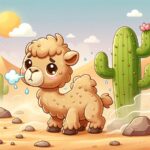Lanugo is one of the many wonders of the human body, especially noticeable in newborns. It’s a term that might not be familiar to everyone, but for new parents, noticing fine, soft hair on their baby’s skin can lead to a whirlwind of questions. This guide aims to demystify lanugo, explain its purpose, and offer peace of mind to those witnessing it for the first time.
What is Lanugo?
Lanugo is a type of very fine, soft hair that covers the body of a fetus while in the womb. Its primary function is to help hold the vernix caseosa, a waxy protective coating that guards the skin of the fetus against the amniotic fluid. Typically, lanugo appears on a fetus around the fourth or fifth month of pregnancy and sheds before birth, although it’s not uncommon for babies, especially those born prematurely, to have lanugo at birth.
This fine hair plays a crucial role in the development and protection of a baby while inside the womb, but it also raises curiosity and sometimes concern among parents when observed on their newborn. It’s important to understand that lanugo is entirely normal and usually falls off within the first few weeks of life as the baby’s skin adjusts to the outside world.
Why Do Babies Have Lanugo?
The presence of lanugo is a fascinating aspect of fetal development. This fine hair begins to grow as part of the baby’s adaptation to its watery environment inside the uterus. Lanugo, together with the vernix caseosa, forms a dual layer of protection, safeguarding the baby’s thin skin from becoming waterlogged due to the amniotic fluid. It also plays a role in the regulation of the baby’s body temperature.
As the baby grows and develops, the need for this protective hair diminishes. The shedding of lanugo and the thickening of the baby’s skin are parts of the natural progression towards birth. For most full-term newborns, lanugo is shed in the womb during the last trimester of pregnancy. However, it’s a common and normal characteristic in premature babies, indicating an earlier stage in their development.
Caring for a Baby with Lanugo
Caring for a newborn’s skin is a gentle process, especially when lanugo is present. While this fine hair is temporary and will shed on its own, it’s essential to handle your baby’s skin with care. Avoid scrubbing or attempting to remove lanugo through exfoliation; this can harm the baby’s delicate skin. Instead, focus on keeping their skin clean and moisturized.
A mild, fragrance-free baby wash used during bath time is sufficient for cleansing a newborn’s skin. After bathing, applying a gentle baby lotion can help keep their skin hydrated. Remember, the key is minimal intervention; lanugo will naturally shed as your baby’s skin matures. In the meantime, if you have concerns about your baby’s skin or notice signs of irritation, consulting a pediatric healthcare provider is advisable.
When to Consult a Doctor
While lanugo in itself is a normal part of newborn development, there are instances when consulting a doctor becomes necessary. If your baby’s lanugo persists much beyond the expected few weeks, or if it is accompanied by other symptoms such as severe skin dryness, eczema, or unusual hair patterns, it may be a good idea to seek medical advice.
Certain medical conditions can manifest through changes in skin and hair growth, so an evaluation by a pediatrician can provide reassurance or identify any underlying issues requiring attention. Moreover, if your baby has lanugo alongside symptoms like difficulty feeding, lethargy, or poor weight gain, these could be signs of an underlying condition, making a visit to the doctor imperative.
For more detailed information on baby health and development, consider visiting helpful resources such as our comprehensive guide on lanugo and other developmental milestones.
In conclusion, lanugo is a fascinating and completely normal feature of newborn development. Its presence is a reminder of the incredible journey babies undergo before their arrival into the world. As new parents, understanding and accepting the natural processes of growth and development, including the appearance and eventual shedding of lanugo, can help ease concerns and foster a nurturing environment for your little one.













